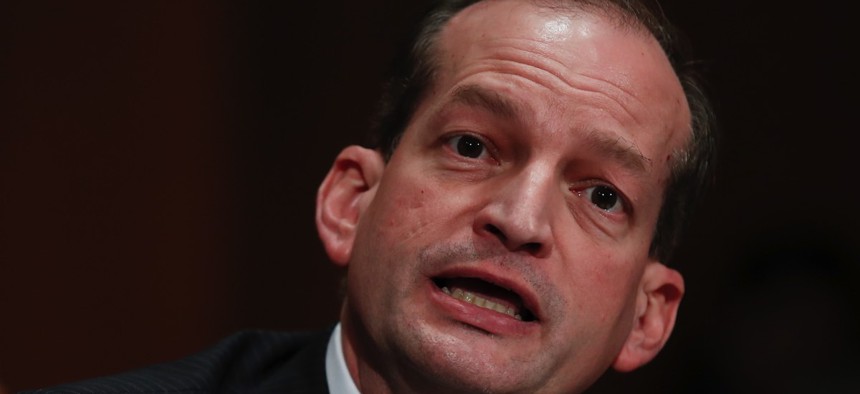Labor Secretary to Mayors: Localized Apprenticeship Programs Won’t ‘Water Down’ Workforce Skills

Labor Secretary Alex Acosta Manuel Balce Ceneta / AP Photo

Connecting state and local government leaders
The Trump administration wants cities and industries to spearhead such initiatives and incorporate them into two- and four-year education programs.
MIAMI BEACH, Fla. — Workforce skills, not natural resources, are now the biggest incentive cities can offer businesses to locate there, and apprenticeships are the way to foster them, said U.S. Labor Secretary Alex Acosta on Friday.
Speaking at the 85th annual meeting of the U.S. Conference of Mayors, Acosta shed a bit of additional light on President Trump’s Expanding Apprenticeships in America executive order, which limits the federal government’s role in such programs while increasing grant funding for them from $90 to $200 million a year.
Acosta rebuffed critics who argue decentralizing apprenticeship programs will “water down skills” that foreign labor and employment ministers are scrambling to instill in their respective workforces.
“If we can solve that issue here, imagine the competitive advantage we will have,” Acosta said.
The Labor secretary favors an “earn-while-you-learn” system with paid work and classroom components for an “experience-based education.” Citing the Building Trades Association as a model, he touted their $1 billion-a-year investment of private sector money in skilled labor.
Acosta promised “broad criteria to assure quality” at the federal level, while leaving “it up to the industries and localities to determine what works for them.” An apprenticeship program in Houston might look different from one in Miami that way.
The Trump administration also plans to encourage two- to four-year community college and even college programs to include apprenticeships in their curriculums. About 40 percent of undergraduate students never get their college degree, Acosta said.
He didn’t miss the opportunity to point out May’s unemployment rate of 4.3 percent is a 16-year low, with the caveat more jobs are open than at any point in Bureau of Labor Statistics history.
If marketed right, apprenticeships can fill those holes, Acosta said, by offering the youngest workers an opportunity to “change lanes.”
“Often apprentice programs are attended by some folks in their mid-20s,” he said. “And the younger folks aren’t as interested.”
Dave Nyczepir is a News Editor at Government Executive’s Route Fifty and is based in Washington, D.C.

NEXT STORY: Governors, CEOs and Trump Are All Showing an Interest in Workforce Development





